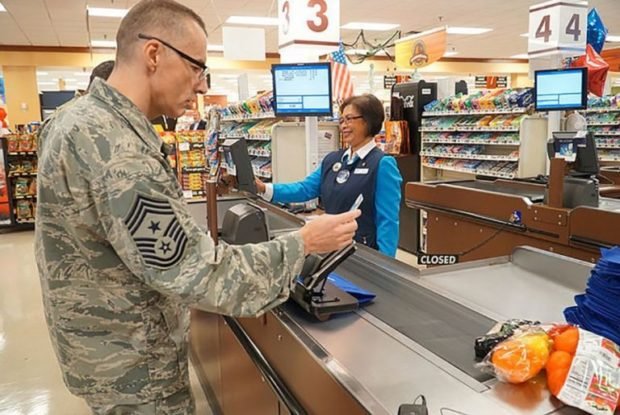Veterans at Higher Risk of Suicide During COVID-19, How YOU can Make a Difference
This era of Coronavirus is both frightening and a period of great uncertainty that presents challenges for all. There are many factions of vulnerable populations, but amongst that list, our Veterans, unfortunately, stand out as gravely at risk. Right Wire Report is calling on all Americans to make a difference by becoming informed, engaged, fund, and act to make a positive impact on this imperative problem.
Veterans already fall into the categories of high rates of homelessness, unemployment, inadequate health care access, financial support deficits, mental health needs, and suicides. The Coronavirus pandemic has only made Veterans particularly more susceptible to both health and economic threats.
The measures of social distancing have compounded an existing risk in Veteran populations who suffer from Post Traumatic Stress Syndrome (PTSD), Traumatic Brain Injury (TBI), Depression, and Anxiety Disorders. A 2018 Veteran Study revealed that loneliness and feelings of isolation are a contributing factor to those who become suicidal and act upon that suicidal ideation. Veterans who suffer from depression and anxiety, often feel marginalized, and barriers to seeking treatment, such as access, funding, and stigma, have only surmounted during COVID-19.
Especially Combat Veterans who suffer from PTSD, and related symptoms, see a rise in stress-related social integration and often find emotional intimacy on any level anxiety-inducing. This often leads to fragmenting of family structures and a narrowing of those physical contacts the Veteran can utilize for emotional support. For this Veteran, the limited resources are usually lifelines. They have learned to trust and conditioned themselves to tolerate the human connection as it is vital for their mental health and survival. Social distancing guidelines have been devastating to some Veterans who now find themselves all alone with their demons.
Consider the findings in the recent 2019 National Veteran Suicidal Prevention Annual Report/Summary:
- The number of Veteran suicides exceeded 6,000 each year from 2008 to 2017.
- Among U.S. adults, the average number of suicides per day rose from 86.6 in 2005 to 124.4 in 2017. These numbers included 15.9 Veteran suicides per day in 2005 and 16.8 in 2017.
- In 2017, the suicide rate for Veterans was 1.5 times the rate for non-Veteran adults after adjusting for population differences in age and sex.
- Firearms were the method of suicide in 70.7% of male Veteran suicide deaths and 43.2% of female Veteran suicide deaths in 2017.
- In addition to the aforementioned Veteran suicides, there were 919 suicides among never federally activated former National Guard and Reserve members in 2017, an average of 2.5 suicide deaths per day.
Another way to view the risk of suicide in Veterans is to note that approximately 20 Service members or Veterans take their lives each day in this country.
Right Wire Report requests you to take a pause and read that above sentence again. Nearly 79,000 Veterans died by suicide between 2005 and 2017. By comparison, 7,000 troops were killed in combat in the two decades of the war on terror in Iraq and Afghanistan. The Trump administration has made this a priority, and you can read more here at the National Task Force website.
Age and respiratory illnesses are both risk factors for COVID-19 mortality. In 2017, Veterans’ median age was 64; their average age was 58, and 91% were male. The largest group served in the Vietnam era, where 2.8 million Veterans were exposed to Agent Orange. Many suffer lung-related illnesses. Younger Veterans deployed to Iraq and Afghanistan were exposed to dust storms, oil fires, and burn pits, and perhaps as a consequence, have high rates of asthma and other respiratory illnesses.
Many Veterans live in Soldier Homes, or extended treatment stays in VA medical facilities. As of April 27, Nearly 7,000 of America’s Veterans have tested positive for COVID-19 at Veterans Affairs facilities, and 435 have died from the disease. There has been a dramatic uptick in the number of Veterans seeking remote mental health assessments. In February, those totaled about 40,000 appointments. In March, they topped 154,000, a nearly four-fold increase.
Along with traditional psychiatric interventions, in recent years, many alternative and innovative ways of treating PTSD have been found most effective in Veteran populations. Complimentary and alternative treatments for PTSD (CAM) uses yoga, acupuncture, herbal supplements, and spinal manipulations, to name a few. Learn more here. Cognitive Behavioral Therapy (CBT) has shown a more significant decrease in symptoms than other non-drug approaches and includes Cognitive Processing Therapy (CPT) and Prolonged Exposure Therapy (EP).
The most exciting of the new lines of defense against the ravaging effects of PTSD in all populations, including Veterans, is the use of Animal Assisted Therapy (video link).
Given that there are more than 3 million dogs in shelters in the United States, and that each year nearly one – fifth are euthanized, it would seem both a logical solution and easy to connect w PTSD sufferer to a beloved dog, But the federal, state and local regulatory compliance and funding capacity have proved to be daunting. The costs involved in training service animals range from $20,000 and $30,000 per animal. In Jan 2020, the House passed the Puppies Assisting Wounded Servicemembers for Veterans Therapy Act (PAWS), and it now waits for Senate approval and signature to become law. The CARES ACT recently signed into law for coronavirus relief did include 20 billion marked for Veterans’ needs. Equine Assisted Therapy is also finding to be very beneficial in the treatment of PTSD in Veterans (video link).
But much more is needed if we desire to shore up all the cracks we lose our heroes through daily. We need a targeted, highly visible National Campaign that informs and empowers all Americans to make a difference in a Veterans life as they have in ours. This campaign should include programming in schools as young as kindergarten through college to promote Veteran support and engagement. Legislation geared at tax incentives and private/public partnerships to encourage a pathway to hire and heal our Veterans. And a focus on addiction and homelessness to address the dire needs of many of our Veterans on the streets.
Beyond government, each American has a role to play. Contact your local and national charities and not only provide donations but give of your time to the cause. Now, in light of COVID-19, we must be aggressive and seek gains against the epidemic of Veterans’ suicides and not lose ground! Here are only a few charities and foundations you might want to consider:
Check your local area and adopt a charity to become active and make a real difference in a Veteran’s life.
You do not have to be a Veteran to suffer from depression and ruminating thoughts of suicide. Many Americans struggle with addiction and mental difficulties. Many families and friends suffer from the loss of a loved one to suicide, and this is often a triggering event in their lives as well. During this unprecedented time, we find ourselves all in the same boat adrift paddling to stay above water and get to safety from this pathogen. Do not ignore the person next to you flailing with his or her oar against the torrent waves. Do not allow yourself to slip under the waterline …
It only takes one action, JUST ONE, to stem the tide. If you know of a Veteran, or anyone, who appears to be struggling, do ACT. Talk to them directly or address your concerns with a member of their support system.
IF YOU feel overwhelmed and hopeless and begin to think about harming yourself, find our voice. Allow yourself to ask for help and know you are truly not alone against your fight. If you cannot find someone close to you to reach out to call the:
National Suicide Prevention Lifeline: 1-800-273-8255
One pause to make one move to be cradled in comfort in support in crisis – is whatever human being has already earned in this lifetime – Veterans more than most.





